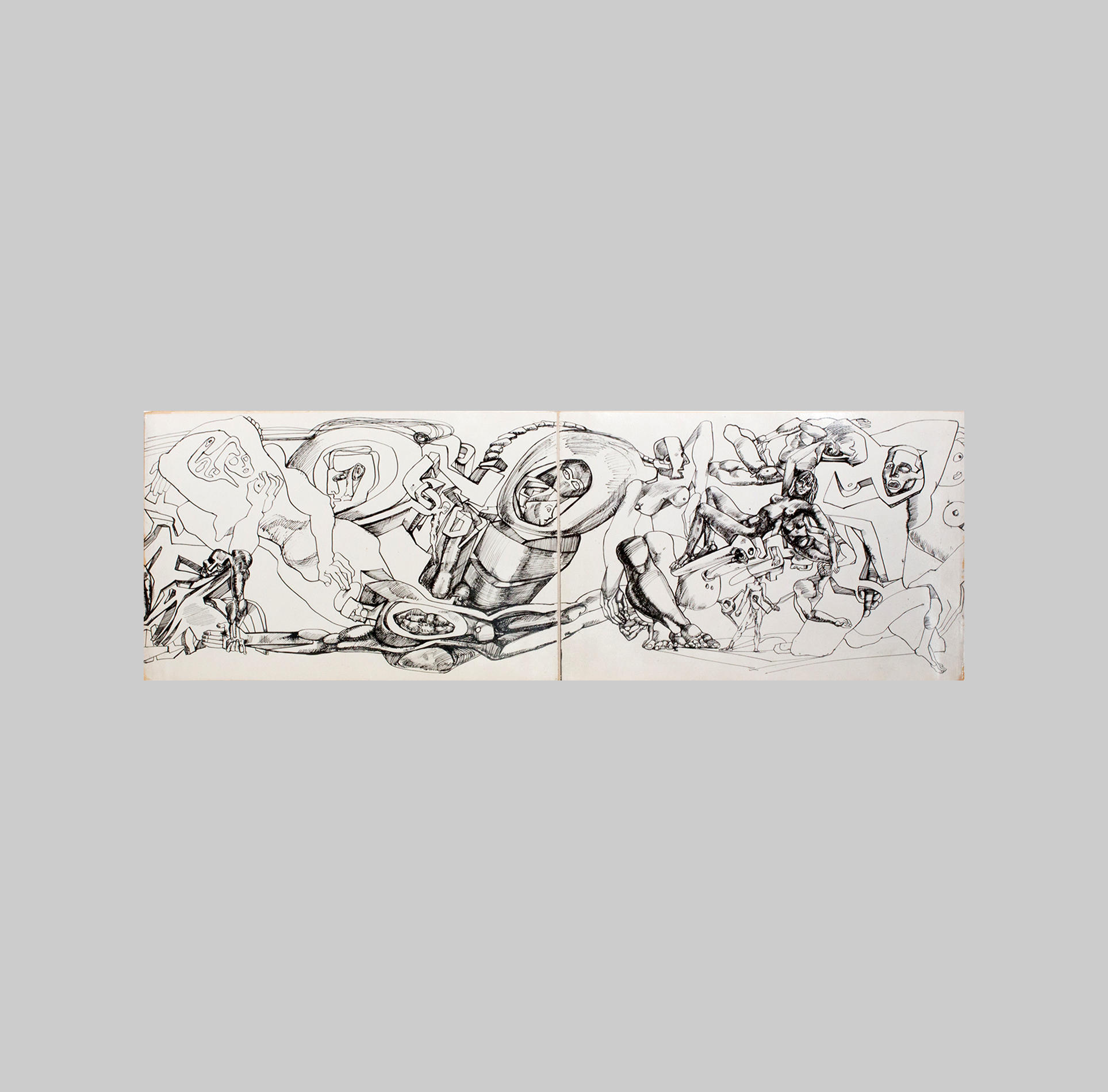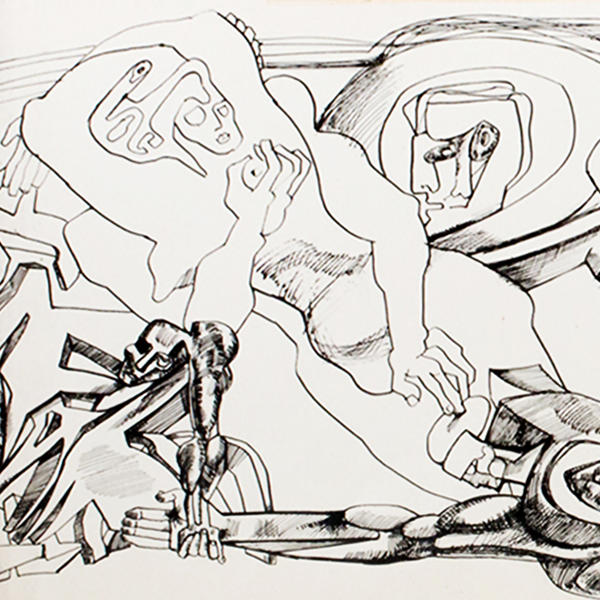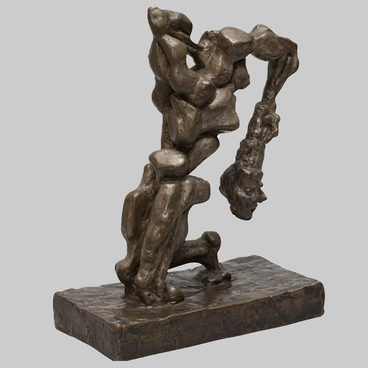Before emigrating, Ernst Neizvestny presented the sketchbook with sketches for the Tree of Life sculpture to his friend Yuri Karyakin. The details of each drawing were thoroughly developed and later became part of the sculpture. The master had an ambitious plan: he wanted to create not just a monument, but a whole temple that would reflect the theme of the contradiction between man and human nature itself.
According to Ernst Neizvestny, this idea came to him in 1956, when he was experiencing a difficult time and had the feeling that there was no space for him to grow, exhibit his works, and, as a consequence, nothing to create art for. On a night like this, he had a dream about his new creation, the Tree of Life. This was how he regained the purpose worth living and working for.
The Tree of Life monument was conceived as seven loops of Möbius artistically and spatially united to form a heart shape. Actually, while dreaming, Neizvestny imagined the construction as a single band, but the ideological basis was ready: the crown of the tree was to represent the three main biblical components – a tree, a heart, and a cross – which symbolised each other in the Bible.
The idea of the master was that the Möbius band provided countless options for the disposition of design elements, in contrast to the traditional topology of drawings on planes. The expected result was a synthesised sculpture, with its design principle derived from temple architecture.
Ernst Neizvestny believed that anything related to temples was a microelement of the Universe, and this was very important to him. For that reason, he worked on every detail of his project with an incredible persistence. He even admitted that instead of making paintings for his structure, he would have rather delegated its management to electronics programmed for colour rotation.
Unfortunately, it did not work out exactly as intended. The Tree of Life appeared in Moscow in 2004, but it was just a sculpture in the form of a massive tree crown, not a museum. There was neither colour architecture nor loops of Möbius, which the visitors were supposed to walk on.
Simply a sculpture. Simply created by a master. A master with a famous name: Ernst Neizvestny.
According to Ernst Neizvestny, this idea came to him in 1956, when he was experiencing a difficult time and had the feeling that there was no space for him to grow, exhibit his works, and, as a consequence, nothing to create art for. On a night like this, he had a dream about his new creation, the Tree of Life. This was how he regained the purpose worth living and working for.
The Tree of Life monument was conceived as seven loops of Möbius artistically and spatially united to form a heart shape. Actually, while dreaming, Neizvestny imagined the construction as a single band, but the ideological basis was ready: the crown of the tree was to represent the three main biblical components – a tree, a heart, and a cross – which symbolised each other in the Bible.
The idea of the master was that the Möbius band provided countless options for the disposition of design elements, in contrast to the traditional topology of drawings on planes. The expected result was a synthesised sculpture, with its design principle derived from temple architecture.
Ernst Neizvestny believed that anything related to temples was a microelement of the Universe, and this was very important to him. For that reason, he worked on every detail of his project with an incredible persistence. He even admitted that instead of making paintings for his structure, he would have rather delegated its management to electronics programmed for colour rotation.
Unfortunately, it did not work out exactly as intended. The Tree of Life appeared in Moscow in 2004, but it was just a sculpture in the form of a massive tree crown, not a museum. There was neither colour architecture nor loops of Möbius, which the visitors were supposed to walk on.
Simply a sculpture. Simply created by a master. A master with a famous name: Ernst Neizvestny.



